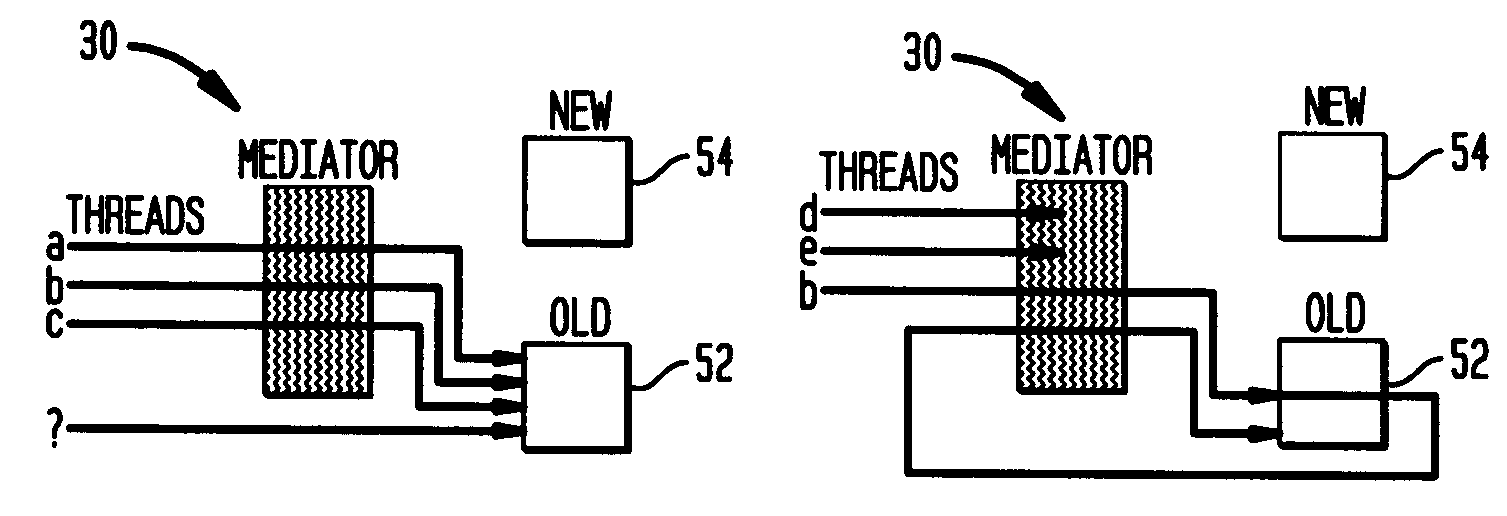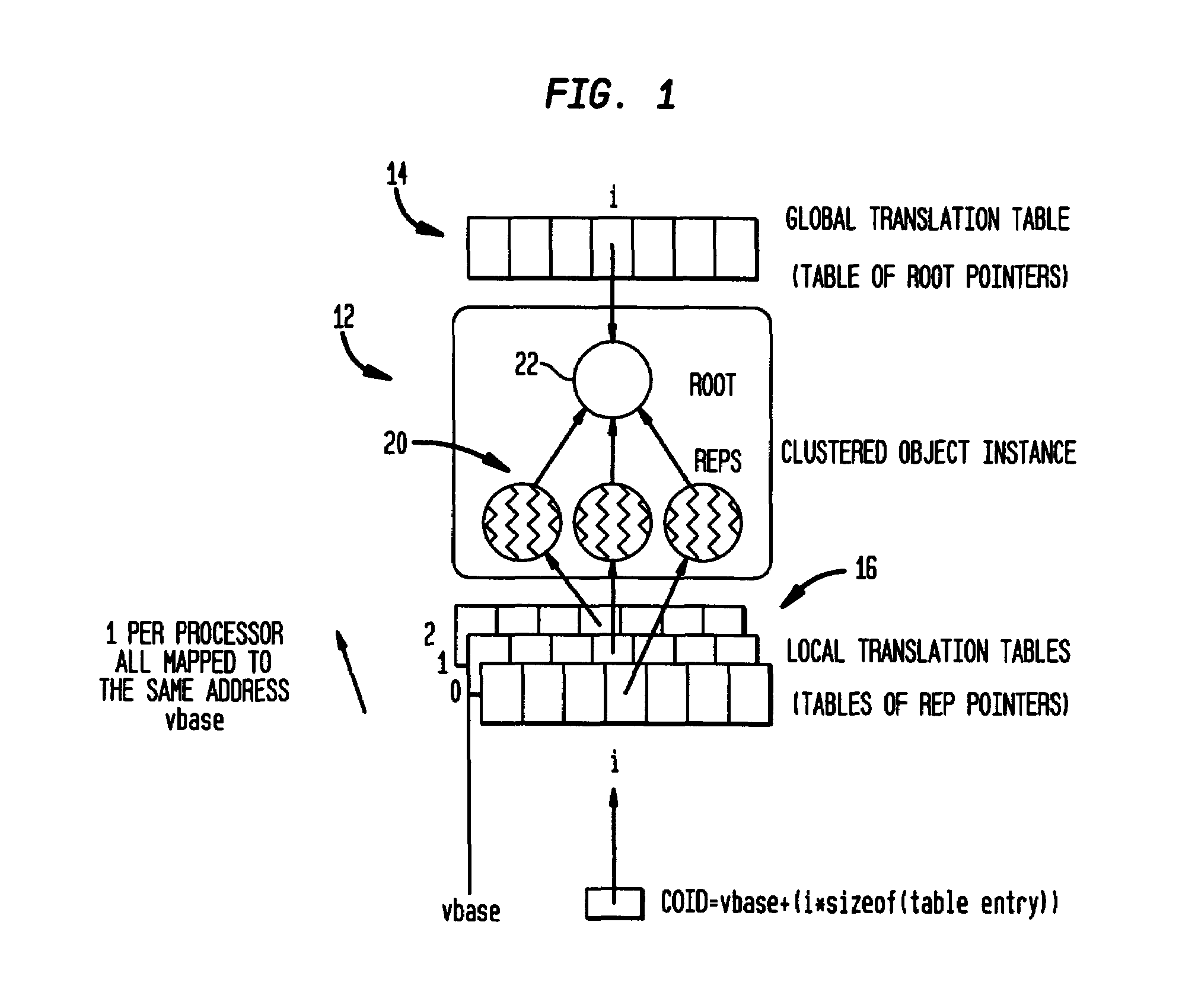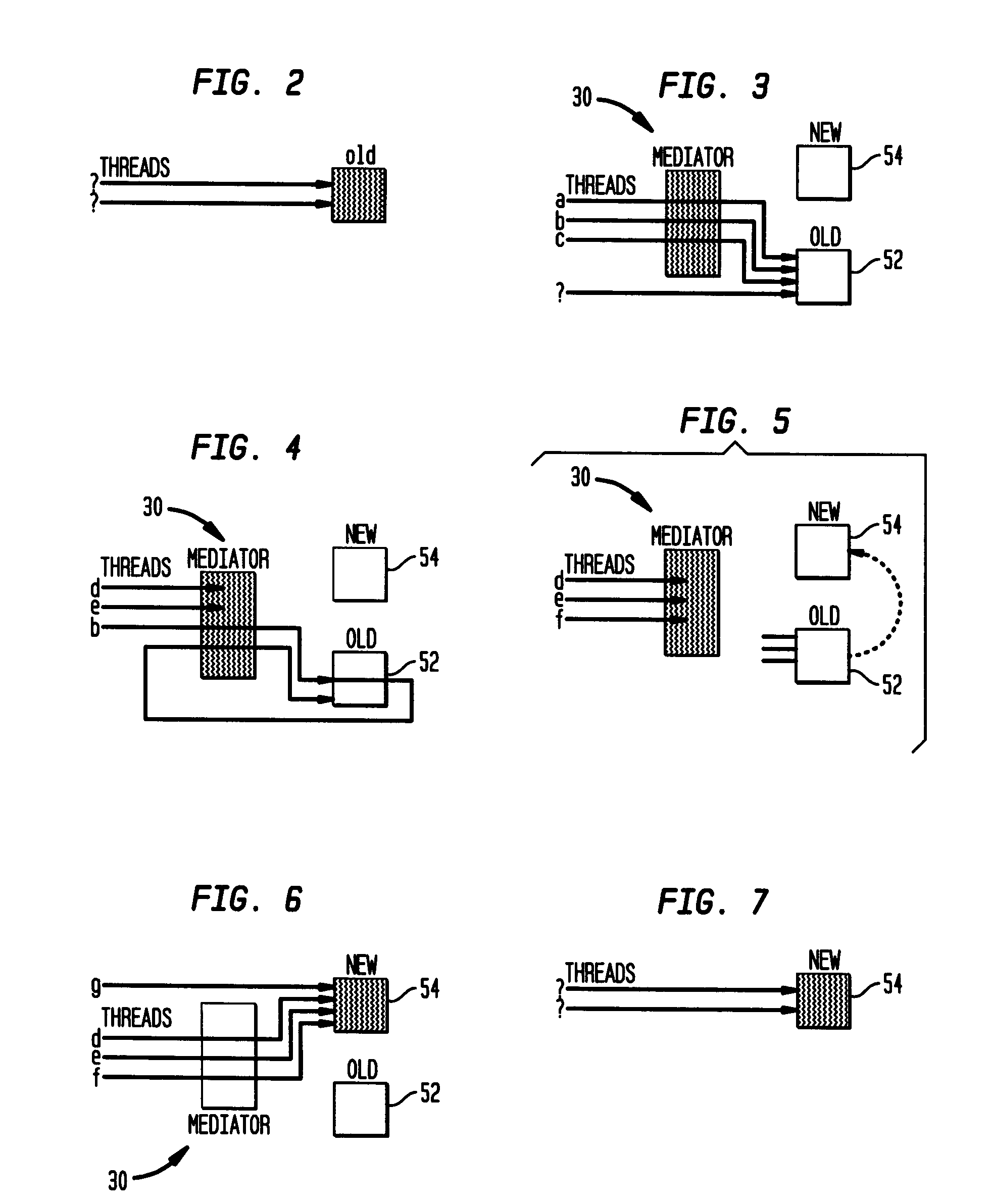Achieving autonomic behavior in an operating system via a hot-swapping mechanism
a technology of operating system and hot swapping mechanism, applied in computing, digital computers, instruments, etc., can solve the problems of not solving the problems not addressing the problems of all the solutions, and not solving the problems of the ones they address
- Summary
- Abstract
- Description
- Claims
- Application Information
AI Technical Summary
Benefits of technology
Problems solved by technology
Method used
Image
Examples
Embodiment Construction
[0021]The present invention is not limited to the following described embodiment. This implementation demonstrates the advantages of using the invention. To hot swap code, the system must be able to identify and encapsulate the code and data for a swappable component. There are several potential ways to achieve this. The preferred embodiment uses an object-oriented model that facilitates the process of modularizing the code. In this embodiment, clustered objects are used for achieving objects with well-defined code and data boundaries on multiprocessors. Clustered objects are discussed in “Hierarchical Clustering: A Structure for Scalable Multiprocessor Operating System Design,” by R. C. Unrau, O. Krieger, B. Gamsa and M. Stumm, Journal of Supercomputing, pp 105-134, 1995, vol 9, no. 1, (Unrau, et al.). Although the preferred implementation of this invention is in C++ in a modular operating system, these techniques can be applied to other operating systems and languages with the app...
PUM
 Login to View More
Login to View More Abstract
Description
Claims
Application Information
 Login to View More
Login to View More - R&D
- Intellectual Property
- Life Sciences
- Materials
- Tech Scout
- Unparalleled Data Quality
- Higher Quality Content
- 60% Fewer Hallucinations
Browse by: Latest US Patents, China's latest patents, Technical Efficacy Thesaurus, Application Domain, Technology Topic, Popular Technical Reports.
© 2025 PatSnap. All rights reserved.Legal|Privacy policy|Modern Slavery Act Transparency Statement|Sitemap|About US| Contact US: help@patsnap.com



